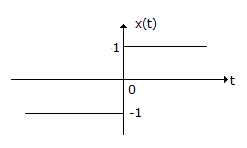Electronics and Communication Engineering - Signals and Systems
Exercise : Signals and Systems - Section 3
- Signals and Systems - Section 1
- Signals and Systems - Section 2
- Signals and Systems - Section 3
- Signals and Systems - Section 4
- Signals and Systems - Section 5
- Signals and Systems - Section 6
- Signals and Systems - Section 7
- Signals and Systems - Section 8
- Signals and Systems - Section 9
- Signals and Systems - Section 10
16.
Which one is a non-causal system?
Answer: Option
Explanation:
Because in (a) if you put n = 1 then y(n) = x(2) which shows output depend upon future value.
While in (b), (c) input converted to Past or Present and past.
Note that n cannot be in fraction so for x(n/2) you will put n = 2, 4, ... etc. not 1, 3, 5 .... etc.
17.
A linear system is characterized by H(ω) = Be-2ω2 the system is physically
Answer: Option
Explanation:
Exponential function cannot be linear.
18.
The current in a circuit with 10 Ω resistance is i = 3 + 4 sin (100 t + 45°) + 4 sin (300 t + 60°) A. The rms current and power dissipated are
Answer: Option
Explanation:
 .
.
19.
Fourier transform pair are
Answer: Option
Explanation:
This is property of autocorrelation.
F[R1, 1 (t)] = s(f) where s(f) is Power spectral density.
20.
The function x(t) is shown in the given figure. Even and odd parts of a unit step function ∪ (t) are respectively,


Answer: Option
Explanation:


Quick links
Quantitative Aptitude
Verbal (English)
Reasoning
Programming
Interview
Placement Papers



